Showing 301–312 of 383 results
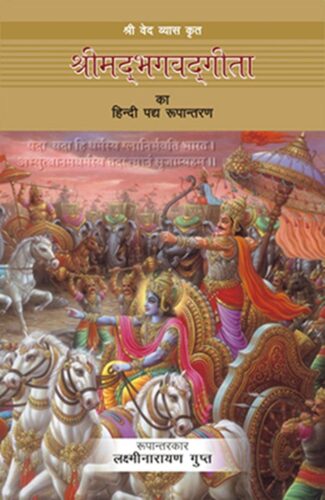
Gita is one of the several educational books maintaining its popularity. On reaching US, the author found that there are several English translated editions of Gita, but none in Hindi in verse formation. So, here the author has made an effort.
Gita occupies a special place among Indian spiritual literature. On reaching America the author found several translations of Gita available in English, though only a few were in the form of poetry. He felt scarcity of Hindi translations of these verses. This translation is a sincere attempt in filling this gap. In modern times when Hindi speakers having knowledge of Sanskrit to understand the roots of shlokas are very rare, translation of these shlokas in poetic form will not only help in understanding their meaning but also in memorizing them easily. The language used in this poetic form is very simple and even many Sanskrit words of Gita, commonly used in Hindi have been adopted. This sincere attempt of Dr Gupt transmits the actual meaning of the verses of the Gita to the readers rather than giving the views of a translator. The lovers of Gita would be highly benefited by this edition as it has been written specially to satisfy their thirst.
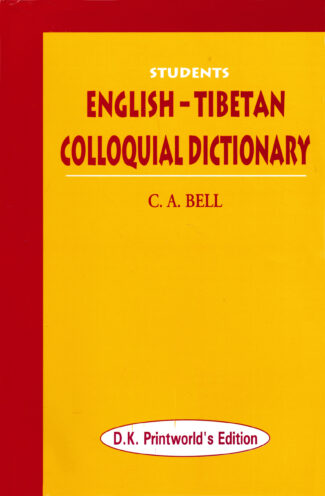
The Dictionary containing more than eleven thousand words including honorific words, is a practical handbook that attempts to provide a quick yet thorough understanding of the colloquial Tibetan language. It presents Tibetan words in romanised form for pronunciation by those who do not understand Tibetan.
The Dictionary is a practical handbook that attempts to provide a quick yet thorough understanding of the colloquial Tibetan language. A special feature of the Dictionary containing more than eleven thousand words including honorific words, is that the Tibetan words are presented in romanised form for pronunciation by those who do not understand Tibetan. An introductory chapter details the structure and system of pronunciation of Tibetan letters and words. It combines an easy approach with incorporation of features like two or more Tibetan words against the same English equivalent and the literary form in the Tibetan character, with the colloquial form in the romanised Tibetan, when the colloquial and Tibetan forms differ from each other to some extent. All this is to aid in a deeper knowledge of the subject. A special feature of this edition is that all the corrections listed in the errata of the second edition have been carried out in the main text. The volume will be particularly useful to scholars of Tibetan language and English-speaking students learning the language.

The Dictionary containing more than eleven thousand words including honorific words, is a practical handbook that attempts to provide a quick yet thorough understanding of the colloquial Tibetan language. It presents Tibetan words in romanised form for pronunciation by those who do not understand Tibetan.
The Dictionary is a practical handbook that attempts to provide a quick yet thorough understanding of the colloquial Tibetan language. A special feature of the Dictionary containing more than eleven thousand words including honorific words, is that the Tibetan words are presented in romanised form for pronunciation by those who do not understand Tibetan. An introductory chapter details the structure and system of pronunciation of Tibetan letters and words. It combines an easy approach with incorporation of features like two or more Tibetan words against the same English equivalent and the literary form in the Tibetan character, with the colloquial form in the romanised Tibetan, when the colloquial and Tibetan forms differ from each other to some extent. All this is to aid in a deeper knowledge of the subject. A special feature of this edition is that all the corrections listed in the errata of the second edition have been carried out in the main text. The volume will be particularly useful to scholars of Tibetan language and English-speaking students learning the language.

Success is a journey, not a destination. It comes beacuse of proper planning and its execution, having the ingredients of opportunity and talent. These 100 quotes bring forth the meaning, ways and means, and different facets of success. Each quote has a stimulating painting of Lord Ganesha, the Lord of Peace, Prosperity and Wisdom, resonating the theme.
The authors, through 100 quotes, brings forth the meaning, ways and different facets of success. Each quote has a stimulating painting of Lord Ganesha, the Lord of Peace, Prosperity and Wisdom, representing the theme. Many of these recollective quotes are from highly reputed global personalities, who enlightened this world with their lives and services, and the rest are from the pens of the authors.
Success is a highly subjective topic. It means different to different people. Climbing the ladder of success is like climbing a mountain, from one peak to another. Succcess is a journey, not a destination. It comes beacuse of proper planning and its execution, having the ingredients of opportunity and talent. Luck is not a criterion in success. Dream big, but practical, have self esteem, work hard, remove negative thoughts from the mind, learn from the past experiences, and have the willingness and readiness to change, improve and achieve. One is set to embrace success for sure!.

Taken from Ramcharitmaanas, this small book contains rules for doing Sundar Kaand Puja and includes Hanumaan Chaalisaa, Sankatmochan Hanumaanashtak, Bajrang Baan, Sri Ram Stuti and Hanuman and Ramayana aaratis.
Taken from Ramcharitmaanas, this small book contains rules for doing Sundar Kaand Puja and includes Hanumaan Chaalisaa, Sankatmochan Hanumaanashtak, Bajrang Baan, Sri Ram Stuti and Hanuman and Ramayana aaratis.

The book makes a fascinating study of the unique philosophical tradition revolving around the concept of the Sunya Purusa the ineffable, indescribable and non-dual Reality that originated in medieval Orissa. Examining a range of philosophies, it throws light on the theories of this rare school of Vaisnavism that was Vaisnavite in form but Buddhistic in essence.
This pioneering study of the indigenous philosophical tradition of Orissa which evolved between the 15th 16th century ce brings into limelight the wonderful syncretism of Buddhism and Vaishnavism, traditions that are generally considered philosophically antithetical. A deep metaphysical quest underlies the enquiries and analyses of this assimilative tradition and is epitomized in the works of the philosopher-poets of Orissa in the concept of the Shunya Purusha the ineffable, indescribable and non-dual reality. This is a unique concept that encompasses within its fold the idea of Jagannatha (the Vaishnavite deity of Puri) as Shunya. The author explores the whole range of Indian philosophical heritage including Vaishnavism, Buddhism, Advaita Vedanta, Yoga, and Natha tradition to bring out the highpoints of this rare philosophical tradition. She, very competently, throws light on the philosophical theories/concepts of Bauddha Vaishnavism Vaishnavic in form but Buddhist in spirit. The book is a valuable guide on this distinctive Orissan Vaishnava tradition to all students and scholars of Indian religion and philosophy.

The Surya Siddhanta is one of the earliest astronomical texts of the ancient India. Under the tradition of Upanishads, the Surya Siddhanta reveals the knowledge of the planetary motion of the solar system directly given by the Sun god to Mayasura, subsequently passed down in oral form. Later on Varahamihira (ce 505-87) discussed the doctrine of Surya Siddhanta in his book on Pancasiddhantika. The present Hindi translation of the Sanskrit verses of Surya Siddhanta is based on the famous English translations by Reverend Ebenezer Burgess (1860) and Pt. Bapu Deva Sastry (1861).
Significant coverage in the fourteen chapters of the book is on units of time, length of the year of gods and demons, day and night of Brahma, the elapsed period since creation, planetary eastwards movement and sidereal revolution. The lengths of the earths diameter, circumference are also given. Eclipses and colour of the moons eclipsed portion are mentioned. The appendices provide the modern aspect on these topics. The researchers of ancient astronomy and others may find it an interesting reading.
The Surya Siddhanta is one of the earliest astronomical texts of the ancient India. Under the tradition of Upanishads, the Surya Siddhanta reveals the knowledge of the planetary motion of the solar system directly given by the Sun god to Mayasura, subsequently passed down in oral form. Later on Varahamihira (ce 505-87) discussed the doctrine of Surya Siddhanta in his book on Pancasiddhantika. The present Hindi translation of the Sanskrit verses of Surya Siddhanta is based on the famous English translations by Reverend Ebenezer Burgess (1860) and Pt. Bapu Deva Sastry (1861).
Significant coverage in the fourteen chapters of the book is on units of time, length of the year of gods and demons, day and night of Brahma, the elapsed period since creation, planetary eastwards movement and sidereal revolution. The lengths of the earths diameter, circumference are also given. Eclipses and colour of the moons eclipsed portion are mentioned. The appendices provide the modern aspect on these topics. The researchers of ancient astronomy and others may find it an interesting reading.

The Taittiriya Upanisad is offered in three chapters treated singly by the author who reveals the invisible thread that runs through them. The analytical commentary results from the insights he has gained from interactions over the years.
The Upanishads capture the quintessence of Indian spiritual wisdom unfolding deep-set, highly perceptive reflections on human existence and how it is related to cosmic mystery. Authored by enlightened seers, at different times, during 1500-200 b.c., the Upanishadic message inheres neither a promise of heaven, nor scare of hell. Rather, it is a magnificent vision that raises human consciousness to sublime heights. The Taittiriya appended to the Krishna (Black) Yajur Veda is one of best among the principal Upanishads. And, schematically, is offered in three chapters, entitled: (1) Shiksha Valli, (2) Brahmananda Valli, and (3) Bhrigu Valli which each Swami Muni Narayana Prasad treats singly, superbly revealing the invisible thread that goes through all of them. With origjnal Sanskrit text, its Roman transliteration and easy-to- understand English paraphrase, this stimulating, at once analytical commentary grows from Swami Muni Narayana Prasads prolonged reflections on the Taittiriya Upanishad, coupled with the insights he acknowledges to have gained from Nataraja Gurus discourses on different Upanishadic themes, Narayana Gurus mystico-philosophical poems, and numerous sessions of intellectual interaction with different groups of scholars.

The Taittiriya Upanisad is offered in three chapters treated singly by the author who reveals the invisible thread that runs through them. The analytical commentary results from the insights he has gained from interactions over the years.
The Upanishads capture the quintessence of Indian spiritual wisdom unfolding deep-set, highly perceptive reflections on human existence and how it is related to cosmic mystery. Authored by enlightened seers, at different times, during 1500-200 b.c., the Upanishadic message inheres neither a promise of heaven, nor scare of hell. Rather, it is a magnificent vision that raises human consciousness to sublime heights. The Taittiriya appended to the Krishna (Black) Yajur Veda is one of best among the principal Upanishads. And, schematically, is offered in three chapters, entitled: (1) Shiksha Valli, (2) Brahmananda Valli, and (3) Bhrigu Valli which each Swami Muni Narayana Prasad treats singly, superbly revealing the invisible thread that goes through all of them. With origjnal Sanskrit text, its Roman transliteration and easy-to- understand English paraphrase, this stimulating, at once analytical commentary grows from Swami Muni Narayana Prasads prolonged reflections on the Taittiriya Upanishad, coupled with the insights he acknowledges to have gained from Nataraja Gurus discourses on different Upanishadic themes, Narayana Gurus mystico-philosophical poems, and numerous sessions of intellectual interaction with different groups of scholars.
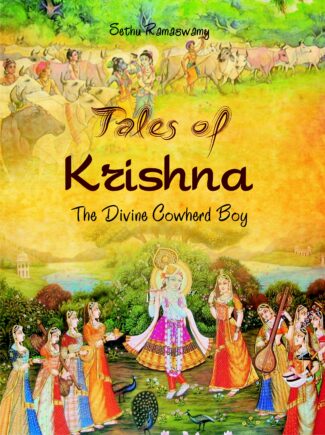
The book presents the stories on Krishna relating to events before and after his birth, his life as cowherd in Gokul, Vrindavan and Mathura and Kansa’s atrocities, his leelas with gopis in Vrindavan, his brave deeds, his visit to Mathura and the death of Kansa.
The book presents the stories on Krishna as contained in the Bhagavata Puranam which was narrated by Sage Shuka to King Parikshit according to legend. The tales relate to events before the birth of Krishna and Krishna’s life as a boy in Gokul, Vrindavan and Mathura. They relate to a number of events and acts relating to the life of Krishna such as Kansa’s atrocities on the people, the plight of Krishna’s parents, Devaki and Vasudeva, the birth of Krishna, his childhood pranks and leelas with gopis in Vrindavan, his brave deeds, his visit to Mathura and the death of Kansa at the hands of Krishna. Written for modern young readers, in a simple and easy-to-understand language, the stories contain the rich religious tradition of India that has come down through the centuries and continue to be revered today.
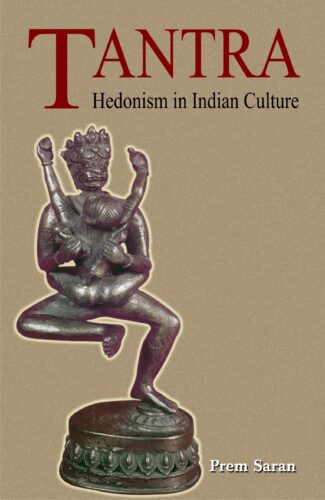
This is a cultural-anthropological study exploring those hedonistic aspects of the pan-Indian heritage which affirm that the pleasurable, especially the sexually pleasurable, is natural as a means to achieve the highest mystical experience.
This is a brilliant cultural-anthropological study exploring those hedonistic aspects of the pan-Indian heritage which, represented by centuries of the non-Vedic, Tantric tradition, affirm that the pleasurable, especially the sexually pleasurable, is natural as a means to achieve the highest mystical experience. Himself a Tantric initiate, Prem Saran offers a compelling, sympathetic analysis of Tantrism, its place in the Bengali and Assamese cultures, and its pervasiveness in pan-Indian thought and ritual generally. Prem Saran’s is also a cultural critique of modern Indian values and life-ways. In addition, it is an exercise in methodology, employing certain anthropological tools and concepts like Cultural Debate, Cultural Criticism, Hindu Renaissance and Pizza-effect the last three having been developed by the late Professor Agehananda Bharati whom the author acknowledges as a constant source of encouragement during the last decade.
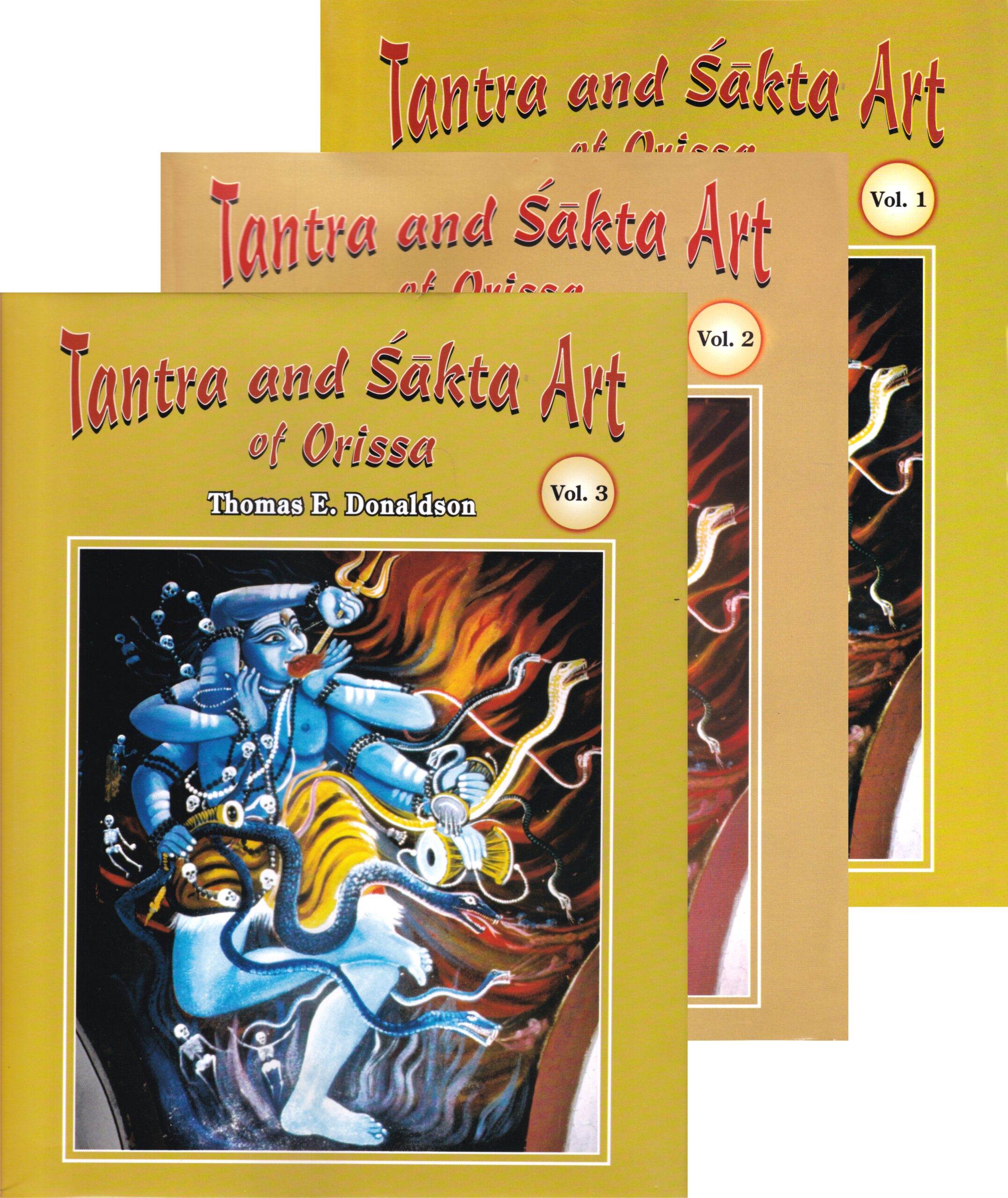
Here Prof. Donaldson presents a rich and variegated picture of the sakta/tantra art of Orissa, highlighting the evolving iconography of individual images. He focuses on different forms and depictions of the Goddess as Sakti, painstakingly analysing the architecture of a number of temples and their images.
The emergence of Tantrism and Shaktism in the sixth-seventh centuries in ancient India symbolised a belief in fertility worship, worship of the female principle with the Devi/Goddess supreme as the Energy/Power the substance of everything, pervading everything. In Orissa in particular, the shakta/tantra cults played a major role in the religion and culture of the region and this is testified by its many temples and sculptural wonders therein. In this work, Prof. Donaldson presents a rich and variegated picture of the shakta/tantra art of Orissa, highlighting the evolving iconography of individual images. Based on largely first-hand study of the temples and their iconography and also referring to various textual sources, he deals with, in detail, the shakta mythology of the region along with its depiction in iconography. He focuses on different forms and depictions of the Goddess the Matrikas, Camunda, Naga/Nagi, Manasha/Jaratkuriu, Tara, the Mahavidyas, the Yoginis and Dakinis and images of Purusha/Prakriti, Agni/Soma and Linga/Yoni, Painstakingly analysing the architecture of a number of temples and their images. The work abounds in photographs (more than seven hundred) revealing the variety of forms of the Goddess and their widespread distribution and provides many maps, diagrams and iconographical charts as well. A thorough research giving attention to minute details even while studying a wide range of iconographical traditions and forms, this work will prove an indispensable source book for young as well as established scholars.